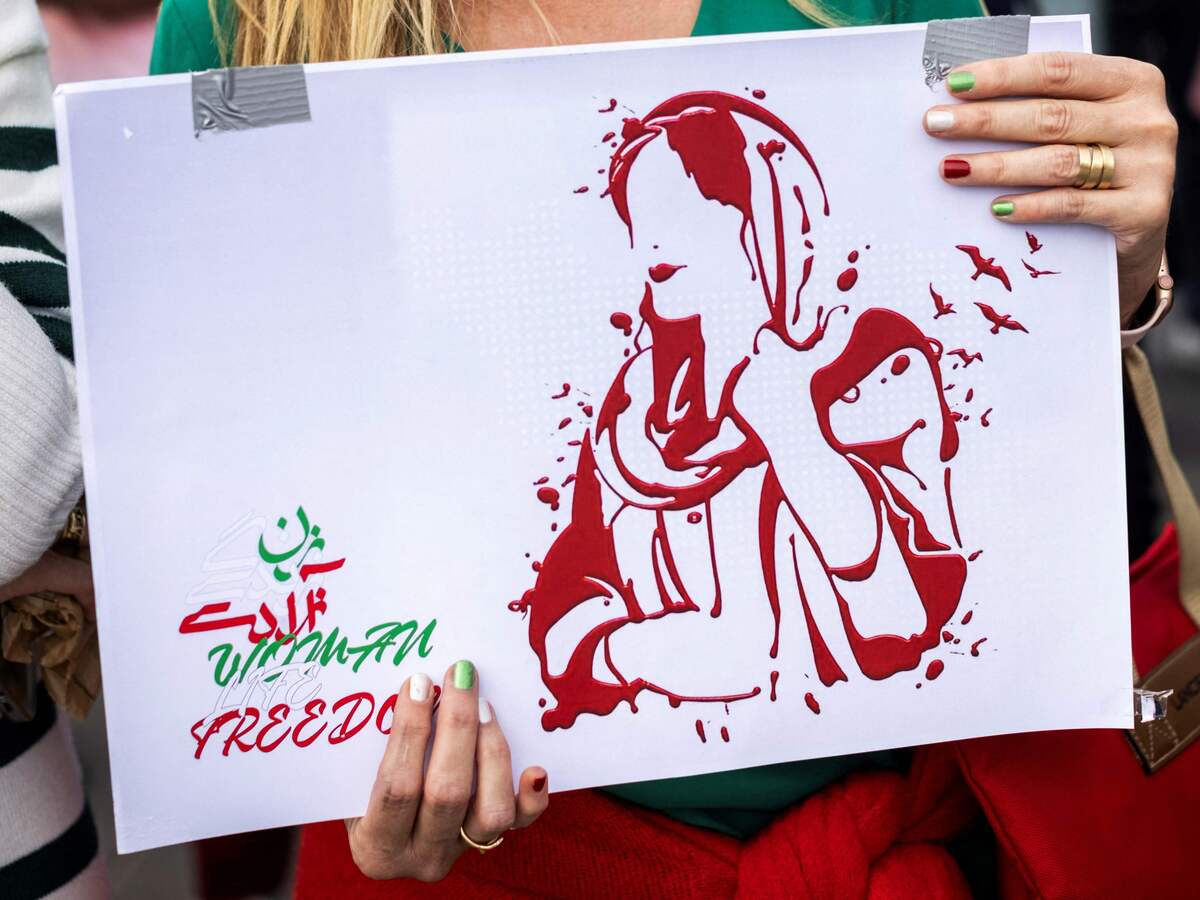
A woman at a rally in Paris last year holds a portrait of Mahsa Amini, who died in custody in September after her arrest by morality police in Tehran. In Iran, despite a government crackdown on protests, frustration and anger persist. Behrouz Mehri/AFP via Getty Images hide caption

A woman at a rally in Paris last year holds a portrait of Mahsa Amini, who died in custody in September after her arrest by morality police in Tehran. In Iran, despite a government crackdown on protests, frustration and anger persist.
Behrouz Mehri/AFP via Getty Images"This kind of dissent? It doesn't go away." That's what NPR heard from a 20-year-old woman on the street in Tehran.
Mary Louise Kelly and a team of producers traveled there last week to see what life looks like, and what remains of the protests that shook the country for months, sparked by the death of 22-year-old Mahsa Amini.
Amini died in police custody after being detained, reportedly for improperly wearing a headscarf, part of Iran's strict dress code for women. Human rights groups say the regime cracked down on those protests with killings, arrests and executions.
In Iran, NPR found people frightened of the regime, but who felt nevertheless compelled to air their grievances.
We speak with Ali Vaez, an Iran expert with the International Crisis Group, about the lingering discontent behind the protests and what could happen next.
Find more of NPR's reporting from Iran.
Email us at
This episode was produced by Connor Donevan and Fatma Tanis. It was edited by Courtney Dorning, Larry Kaplow, and William Troop. Our executive producer is Sami Yenigun.

 Live Radio
Live Radio